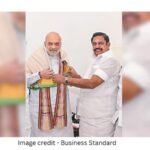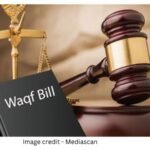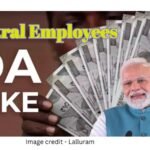One Nation, One Election: A Comprehensive Overview
The concept of One Nation, One Election (ONOE) has once again surfaced prominently in India’s political discourse with the approval of a proposal for simultaneous elections and the submission of a high-level committee report led by former President Ram Nath Kovind. This idea advocates for holding simultaneous elections for the Lok Sabha, State Legislative Assemblies, and potentially local bodies like municipalities and panchayats. Proponents of ONOE argue that it could lead to better governance by reducing frequent disruptions caused by staggered elections, enabling governments to focus on long-term policy implementation and potentially lowering election-related costs.
However, the proposal has sparked debates about its impact on India’s federal structure, political representation, and logistical challenges. Critics argue that simultaneous elections could marginalize local issues, favor national parties, and reduce political diversity. This article provides a detailed exploration of the concept, its advantages, challenges, and the way forward.
What is One Nation, One Election?
Definition and Objective
ONOE refers to the proposal of conducting simultaneous elections for the Lok Sabha (India’s lower house of Parliament) and all State Legislative Assemblies. In some cases, it may also extend to local bodies like municipalities and panchayats. The primary goal is to synchronize electoral cycles across various levels of government, ensuring that elections are held concurrently or within a specific time frame.
Implementing ONOE would require significant amendments to the Constitution and election laws. India experienced synchronized elections from 1951 to 1967, but political instability and premature dissolutions of assemblies disrupted this practice.
Advantages of One Nation, One Election
Cost Reduction
One of the most cited benefits of ONOE is the reduction in costs. Conducting simultaneous elections would lead to significant savings in resources, including election materials, security personnel, and polling staff. The Election Commission of India (ECI) spent Rs 50,000 crore on the 2019 Lok Sabha elections, a sharp rise from Rs 10.5 crore spent in the first general election in 1951-52. Simultaneous elections could streamline the electoral process, reduce operational costs, and lead to more efficient allocation of resources.
Governance Continuity
The frequent imposition of the Model Code of Conduct during staggered elections often leads to a halt in policy implementation. ONOE could mitigate this “policy paralysis,” allowing governments to focus on long-term planning. Additionally, fewer elections would reduce constant campaigning, resource strain, and instances of corruption among political parties.
Reduced Disruptions to Public Life
Educational institutions and public infrastructure are often used as polling stations, leading to disruptions in public services during elections. Simultaneous elections could minimize these interruptions, enabling government officials and public service workers to focus on their duties rather than election-related tasks.
Higher Voter Participation
Supporters of ONOE argue that it could lead to higher voter turnout. The reduced frequency of elections would lessen election fatigue, potentially boosting voter engagement and participation.
Economic Benefits
The Kovind Committee report suggests that simultaneous elections could have a positive impact on India’s economic growth, with a projected 1.5% higher national GDP growth in the year following such elections. It also anticipates an increase in public spending and fiscal deficit due to the concentrated nature of election-related expenditures. Simultaneous elections could also reduce the influx of black money into election campaigns, as businesses face less pressure to contribute to multiple elections.
Improved Election Monitoring
By concentrating elections into one event, the ECI could focus its resources more effectively on ensuring free and fair elections, reducing the likelihood of irregularities and electoral malpractices.
Challenges of One Nation, One Election
Threat to Federalism
One of the most significant concerns about ONOE is its potential impact on India’s federal structure. Simultaneous elections could overshadow local issues, as national narratives might dominate election campaigns, making it harder for regional parties to address state-specific concerns. This could undermine political diversity, as national parties with larger resources and wider reach may outcompete smaller regional parties.
Logistical Challenges
Organizing simultaneous elections for the Lok Sabha, State Legislative Assemblies, and local bodies across India presents massive logistical challenges. The ECI would need to procure a significant number of Electronic Voting Machines (EVMs) and Voter Verifiable Paper Audit Trail (VVPAT) machines, estimated to cost Rs 9,284.15 crore. Coordinating elections in India’s diverse regions, some of which face challenges like difficult terrain and security issues, would require extensive planning and resources.
Constitutional Concerns
Implementing ONOE would necessitate multiple amendments to the Constitution and the Representation of People Act, 1951. Articles 83 and 172, which define the terms of the Lok Sabha and State Assemblies, would need to be modified to align electoral cycles. These amendments could potentially alter the balance of power between the national and state governments and require ratification by more than half of India’s states.
Governance Vacuums
If a state government collapses mid-term, it may lead to prolonged periods of President’s Rule until the next scheduled election, leaving citizens without adequate political representation. This could result in governance vacuums, particularly in times of political or economic crises.
Reduced Accountability
Frequent elections keep politicians accountable to their constituents. By reducing the frequency of elections, ONOE might lead to complacency among elected representatives, who would not face immediate repercussions for underperformance.
Pressure on Election Machinery
There would be a lot of pressure on the ECI to hold free and fair elections across the nation at the same time. Any systemic failures could have far-reaching consequences, potentially undermining public trust in the electoral process.
Recommendations from Various Committees
The high-level committee chaired by former President Ram Nath Kovind has proposed a phased implementation of ONOE. In the first phase, simultaneous elections for the Lok Sabha and State Assemblies would be held. In the second phase, local body elections would follow within 100 days. The committee also recommended amendments to the Constitution, including a new Article 82A to facilitate the transition.
Previous recommendations from the Law Commission (2018), the Parliamentary Standing Committee (2015), and the National Commission to Review the Working of the Constitution (2002) have also supported the idea of simultaneous elections. However, all these bodies emphasized the need for careful planning and resource allocation.
The Way Forward
National Dialogue
A comprehensive national dialogue involving political parties, civil society organizations, and experts is essential to build consensus on ONOE. Public consultations and debates should ensure that diverse perspectives are considered before implementing such a significant change.
Phased Implementation and Legal Preparations
A phased approach could help test the feasibility of simultaneous elections, starting with a few states. Constitutional amendments and legislative changes should be carefully drafted, ensuring that they do not compromise democratic principles.
Safeguarding Federalism
Measures should be designed to ensure that regional and local issues remain central to electoral discussions, preventing the dominance of national parties.
Strengthening Election Commission Capacity
The ECI must be equipped with the necessary resources, technology, and human capital to handle the increased responsibilities of conducting simultaneous elections.
Public Awareness Campaigns
Extensive awareness campaigns should be conducted to educate the public about the implications of ONOE, ensuring that voters are well-informed about the changes in the electoral process.
Conclusion
The idea of One Nation, One Election offers a transformative vision for India’s electoral system, with the potential to enhance governance efficiency, reduce costs, and streamline election processes. However, its impact on federalism, political diversity, and the logistical challenges it presents must be carefully considered. Through national dialogue, phased implementation, and legal preparations, India can explore whether ONOE can strengthen its democracy while addressing the concerns of its critics.









